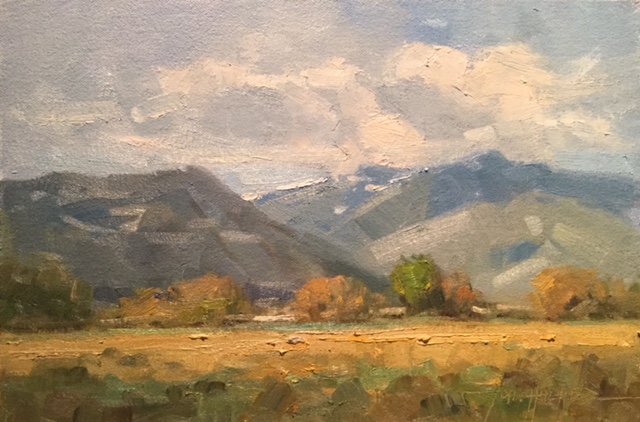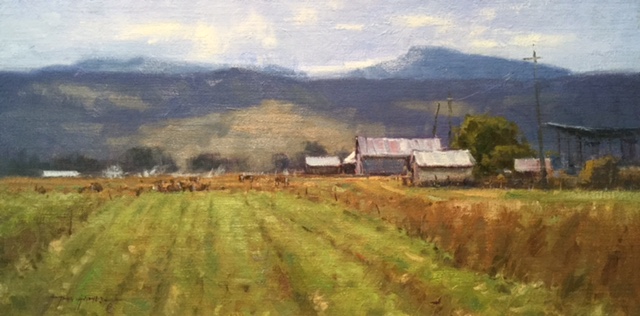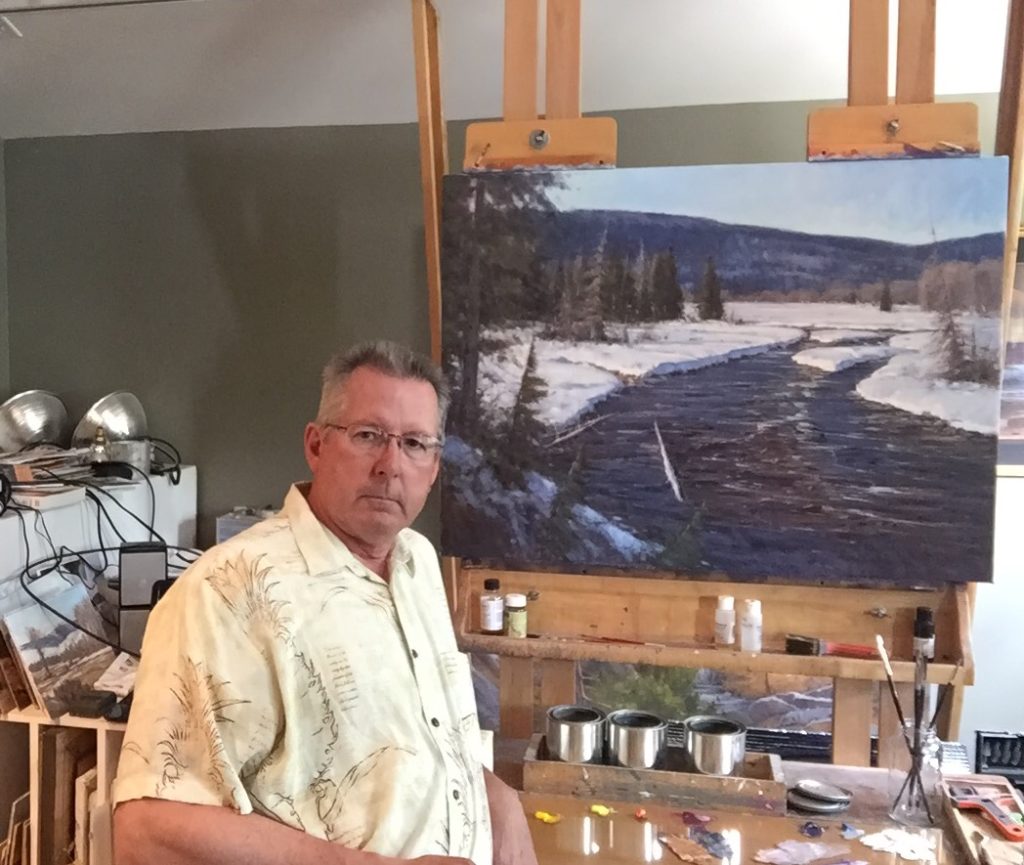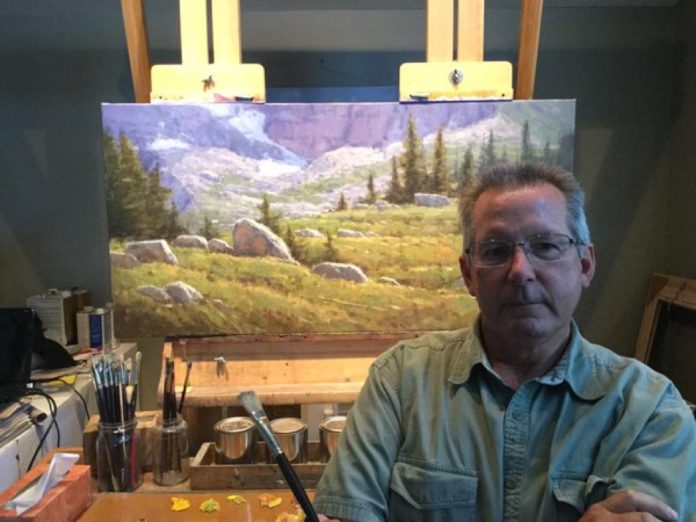There are three divisions of learning that every artist needs to master when it comes to painting landscapes. What are they? Find out here.
On Landscape Painting: 3 Important Skills
There are three divisions of learning that every artist needs to master when it comes to painting landscapes. What are they? Find out here.
- Understanding the properties of light and how light affects objects in nature.
- Knowing the principles of effective design.
- Possessing the means to express these other two in paint, namely drawing, color, value, edges, and brushwork — I call these the Artist’s Toolbox of Expression.
Simply stated, when these three divisions are understood and put into practice, competent paintings can happen.
Of course, one also needs a certain amount of innate creativity, which can’t really be taught because that has to come from within. But assuming the artist does have some of this, what can be learned are these three important skills of the painting process.
Understanding just one or two of these categories is never enough; students may struggle for years, practicing their drawing, their values, and all the rest to no avail — and come away from painting session after painting session frustrated but not knowing what is wrong.

But it’s not good enough just knowing the skills involved, or just understanding the rules of chiaroscuro or even the properties of good design, if all the other skills and principles are not understood. That would be like an orchestra that is missing several essential instruments or even a piano that’s missing several keys; there is not enough there to make up a well-oiled machine.
Imagine for a moment a writer sitting at a keyboard who possesses great spelling ability, one who knows all the rules of grammar, but who lacks basic inspiration or doesn’t have a point of view to express. The tools are there, but the writer has nothing to say. At this point the writer must gain some life experience, or give up entirely.

The same is true of the painter. The good news is, these essential skills are all there for the taking, with some effort. But just putting on brush miles without a plan of attack won’t do; it takes an honest assessment of current skills, as well as areas that need attention, and then going about acquiring the knowledge.
How does one gain such knowledge? Well, tailoring your own specific instruction to meet your needs is a good start. After making the assessment of your own abilities as an artist and understanding where you need work, you can better set yourself on a course of action.

Seeking out good instructors is one way, and attending workshops and conferences and visiting art museums and galleries is an added benefit. It’s important to see what others are doing and to get a feel for new ideas you can try out on your own when it comes to painting landscapes. We live in a day and age where DVDs are available along with YouTube to further your education. These are good courses of action, but beware of too much time in the cyber world. It’s important to get out there and associate with other artists. Sign up for a class and join a painting club. You are sure to find something that meets your needs and helps you move on to greater heights in your painting pursuits.
Visit EricRhoads.com to find out all the amazing opportunities for artists through Streamline Publishing, including:
– Online art conferences such as Plein Air Live
– New video workshops for artists
– Incredible art retreats
– Educational and fun art conventions, and much more.
> Subscribe to Plein Air Today, a free newsletter for artists
> Subscribe to PleinAir Magazine so you never miss an issue






A good read. Found it to be informative and helpful. Too many art students think there’s magic to being an artist. Not enough people understand that it takes a serious investment of time and thoughtful work.
John’s work is an inspired combination of skill and inspiration. If we were closer, I’d hang out with him and absorb all I could!
Great article, John–very straightforward and to-the-point. I agree with you completely on creativity and “brush mileage,” that although any artist “…needs a certain amount of innate creativity, which can’t really be taught because that has to come from within,” there still has to be a goal, a direction, and a LOT of learning and practice. I personally get a lot out of an in-depth viewing of work by artists whose style I admire. Looking closely at their brushwork, their use of color, value, composition, edges, etc. helps me to visualize how I would approach a painting and helps me in my own work. After 26 years in graphic design and art direction, I did learn a few things about composition, contrast, and “visual flow,” but it’s sometimes hard to translate into actual painting…especially plein air! Would love to take a class from you sometime, either in a workshop setting or at SLCC.
This is solid advice for beginning painters and solid reminders for the rest of us. I couldn’t agree with you more about evaluating your work critically, the good and the awful, to really move forward. And I agree it is so important to get out there and meet other artists, through painting groups, classes or workshops. We need each other, we need the critical eye of other artists and we need the support of one another in what is a very rewarding but challenging career choice.
I would like to thank everyone for taking the time to make such meaningful comments. John-
This article contains excellent advice on developing skill and intelligent assessment to enhance creative expression. John explains this so well in his classes and demonstrations. Applying what he teaches can help aspiring artists in their progress.
Great article, pulling me back to the fundamentals.
John outlines my 3 areas of weakness. I ought to post his 3 Fundamentals on my studio wall so I can ask myself constantly, “how am I doing?”
Great information, nice paintings too. You covered some of this in your wonderful painting classes. You make such sense just like the information you taught us in your classes. Craig and I miss you and everyone, Thursday afternoons are not the same. We will be practicing this summer.
Great points and priceless advises from a very capable and talented artist. Sometimes we get lost in the paths of complexity and forget that simplicity is the building block of long lasting success. Thank you John!
Thanks to everyone else who posted, I just got back and didn’t see some of these. Cheers, John-
Hi John, nice artwork, and great article. I’m particularly fond of the piece showcasing the stream during the winter. Looks great!
Thank you Greg!
Thanks
Chuck Call